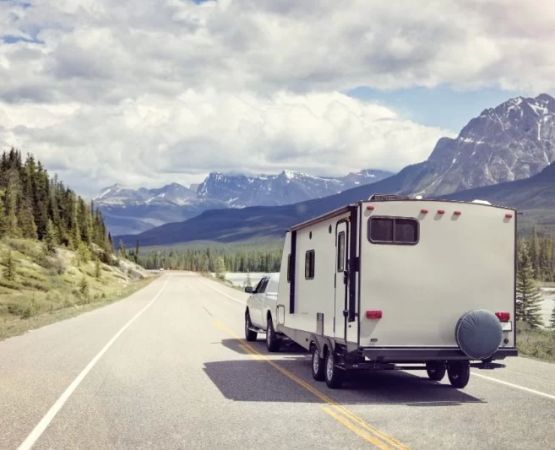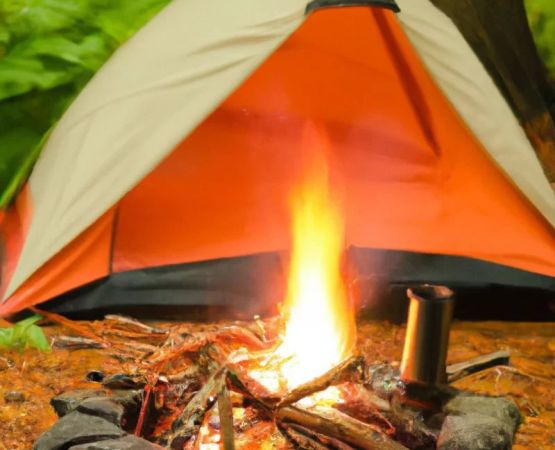How to Pick the Best Sleeping Pad for Comfort While Camping
Camping is an amazing outdoor experience, but if you’ve ever spent a night on a hard, uncomfortable surface, you know how crucial it is to have a good sleeping pad. A good sleeping pad doesn’t just provide comfort; it also insulates you from the cold ground, making your sleep much more enjoyable. Whether you’re an experienced camper or a first-timer, selecting the best sleeping pad for comfort is a key decision that will affect your overall camping experience. In this article, I’ll walk you through how to choose the right sleeping pad for your camping trip, based on comfort, insulation, and practicality. We’ll also talk about some common mistakes to avoid when picking a sleeping pad, and I’ll share some personal tips that have made my own camping trips more comfortable.
1. Understand the Types of Sleeping Pads
When I first started camping, I was overwhelmed by the different types of sleeping pads available. From inflatable to foam, it seemed like there were too many choices. But once I learned the differences, it became much easier to choose the right pad for my needs. The three main types of sleeping pads are:
Inflatable Pads are popular because they pack down small and provide excellent comfort. They are filled with air and are typically more cushioned than foam pads. However, they require inflation, which can be a hassle, and they are more vulnerable to punctures.
Foam Pads are durable and require no inflation. They tend to be lighter and more compact, but they don’t provide as much cushioning as inflatable pads. However, they are great for lightweight camping and can be used in conjunction with other pads for added comfort.
Self-Inflating Pads combine the best features of both inflatable and foam pads. They have a foam core that automatically inflates when the valve is opened. These pads are convenient, comfortable, and versatile, but they tend to be bulkier and heavier than other options.
2. Choosing an Inflatable Pad for Maximum Comfort
If comfort is your top priority, an inflatable pad might be the best choice. I personally love the extra cushioning that an inflatable pad provides. These pads come in various thicknesses, so you can choose one based on how much padding you want. Most inflatable pads are designed to support your body shape, which helps to alleviate pressure points and improve sleep quality.
One of the biggest advantages of inflatable pads is that they are usually lighter and more compact when packed. This is perfect for backpacking or situations where space is limited. However, there are a few things to consider before you make your choice. For example, if you’re going to be camping in rough terrain, look for a pad with a thicker material to reduce the risk of punctures. Additionally, be sure to select a pad with good insulation if you’ll be camping in colder weather.
3. The Benefits of Foam Pads for Lightweight Camping
When I started backpacking, I quickly realized that carrying a bulky, heavy inflatable pad wasn’t always practical. That’s when I switched to foam pads. Foam pads are a great option if you need something lightweight, durable, and easy to use. They don’t require any inflation, so you can just roll them out and sleep. These pads are perfect for minimalist camping trips, and they also work well as an emergency backup if your inflatable pad fails.
While foam pads might not be as cushy as inflatable ones, they still provide decent comfort, especially when combined with a sleeping bag or blanket. They also offer great insulation, which is a key factor to consider in colder environments. Plus, foam pads are almost indestructible. I’ve used them in rugged conditions with little concern for damage, which is why they’re often recommended for more rugged trips.
4. The Versatility of Self-Inflating Pads
If you want a balance of comfort, convenience, and practicality, a self-inflating pad might be the ideal choice. These pads combine the comfort of an inflatable pad with the durability and ease of a foam pad. I’ve used a self-inflating pad on several camping trips, and I’ve found them to be perfect for those looking for both comfort and ease of use.
Self-inflating pads come with a foam core that automatically inflates when you open the valve. This means you don’t have to waste time inflating it manually, and you get a comfortable sleep surface in minutes. They are also more durable than purely inflatable pads, as they are less prone to punctures. However, keep in mind that they tend to be heavier and bulkier than other options, which might not be ideal for backpacking.
5. Consider the R-Value for Insulation
When I first started camping in colder months, I didn’t realize how important the R-value of a sleeping pad was. The R-value measures a pad’s ability to insulate you from the cold ground, which is crucial for a comfortable sleep in chilly conditions. If you’re planning on camping in the winter or colder regions, you’ll need a pad with a higher R-value. Pads with an R-value between 4 and 6 are suitable for most winter conditions, while lower R-values (1-3) are ideal for summer camping.
In my experience, I’ve found that using a sleeping pad with a higher R-value has made a huge difference in how well I sleep on colder nights. When I switched to an insulated sleeping pad, I didn’t wake up shivering in the middle of the night, even when the temperature dropped significantly.
6. Check the Weight and Packability
One of the most important factors I consider when choosing a sleeping pad is the weight and how easy it is to pack. As someone who enjoys backpacking, I know the importance of keeping my gear as lightweight and compact as possible. Inflatable pads generally win in terms of portability, but they can still vary significantly in weight, depending on the materials and design.
Foam pads are lighter and more compact, but they may not provide as much cushioning or comfort. I recommend balancing weight with comfort depending on the type of camping you’re doing. For a long hike or a minimalist camping trip, foam pads are the best choice. However, if you’re car camping or heading out for a more relaxed trip, an inflatable or self-inflating pad can provide the luxury and comfort you might prefer.
7. Personal Experiences: My Camping Comfort Journey
In my early camping days, I struggled with restless nights due to inadequate sleeping pads. I’ve tried many types of pads over the years, from cheap foam ones to high-end inflatable pads. One of the biggest turning points in my comfort was when I invested in a high-quality self-inflating pad with good insulation. The combination of convenience, comfort, and warmth completely changed my camping experience.
Since that upgrade, I’ve been able to sleep better, even in remote areas. On a recent trip to Pine Cliff Resort, I used my self-inflating pad for three nights, and I woke up every morning feeling rested and ready to explore. The extra comfort made a world of difference, and I highly recommend anyone who struggles with comfort during camping to consider upgrading their sleeping pad.
8. Conclusion: Choose the Best Sleeping Pad for Your Needs
Choosing the best sleeping pad for comfort while camping can seem overwhelming, but by considering factors like insulation, comfort, weight, and packability, you can find the perfect pad for your needs. Whether you’re planning a weekend camping trip or a more rugged backpacking adventure, investing in a quality sleeping pad can make all the difference for your rest and overall experience.
If you’re ready to enhance your camping comfort, explore different sleeping pad options at Pine Cliff Resort, where they offer the best gear for your next adventure. Visit now to learn more and book your trip!






